In 2012, a few months before the launch of my first book, Kissed by a Fox, my yoga teacher passed away. The cancer took her quickly, only a few months from diagnosis to her dying.
Wendy Bramlett was beloved in Boulder. I’d been attending her class for five years, the same five years when I wrote most of the book. During my first weeks in her class my older brother died of colon cancer. So Wendy, book writing, and my brother’s death were all bound up for me in those same five years—joined by chronos, everyday time, because they all happened together, as well as by kairos, threshold time, woven together by deeper strands of meaning.
Wendy was known for her gentle way, drawing each yoga pose out of us using little more than our breath. As she led us in a slow, flowing development from one asana to another, her words flowed too, serene and quiet, often full of humor. She had such a way of giving words to the practice that one of her students kept a list of “Wendy Wisdom” from class and shared her list with me after Wendy died. Some of Wendy’s words here are drawn from that list.
I wrote one version of this essay shortly after Wendy died, and it appeared in the Summer 2013 issue of Yoga International magazine under the title “A Gift of Generosity.” When I looked the piece over again recently, I found a different theme running through it, sure and serene as Wendy’s own voice, the theme of listening.
Listening—a stance of openness, being ready to respond well in each changing moment. Listening—a life built on receptivity and humbleness rather than on mastering and making happen. Listening—a way of partnering with life, with the great creative force. And in Wendy’s class, listening—a river of allowing rather than forcing, of opening to breath and body and Earth. Just opening, continually opening.
My own spiritual practice—in writing and meditation and life—has become a practice of listening. I wrote about this in episode 42, “A Path of Listening,” where I talked about listening in relation to two of these, writing and life. I still plan to finish the trilogy and write about listening in meditation. But until then, here is a window into one of the places I practiced this path before I knew it as a path. In Wendy’s class I absorbed, deep in the cells of my body, the sensations of moving by listening—listening first of all to the body and breath, which is of course listening to the Earth.
I am grateful to Avril Bright for sharing her list of Wendy quotes with me. I will forever be grateful, of course, to Wendy. And above all I am grateful to the Earth, whom Wendy knew and trusted so fully.
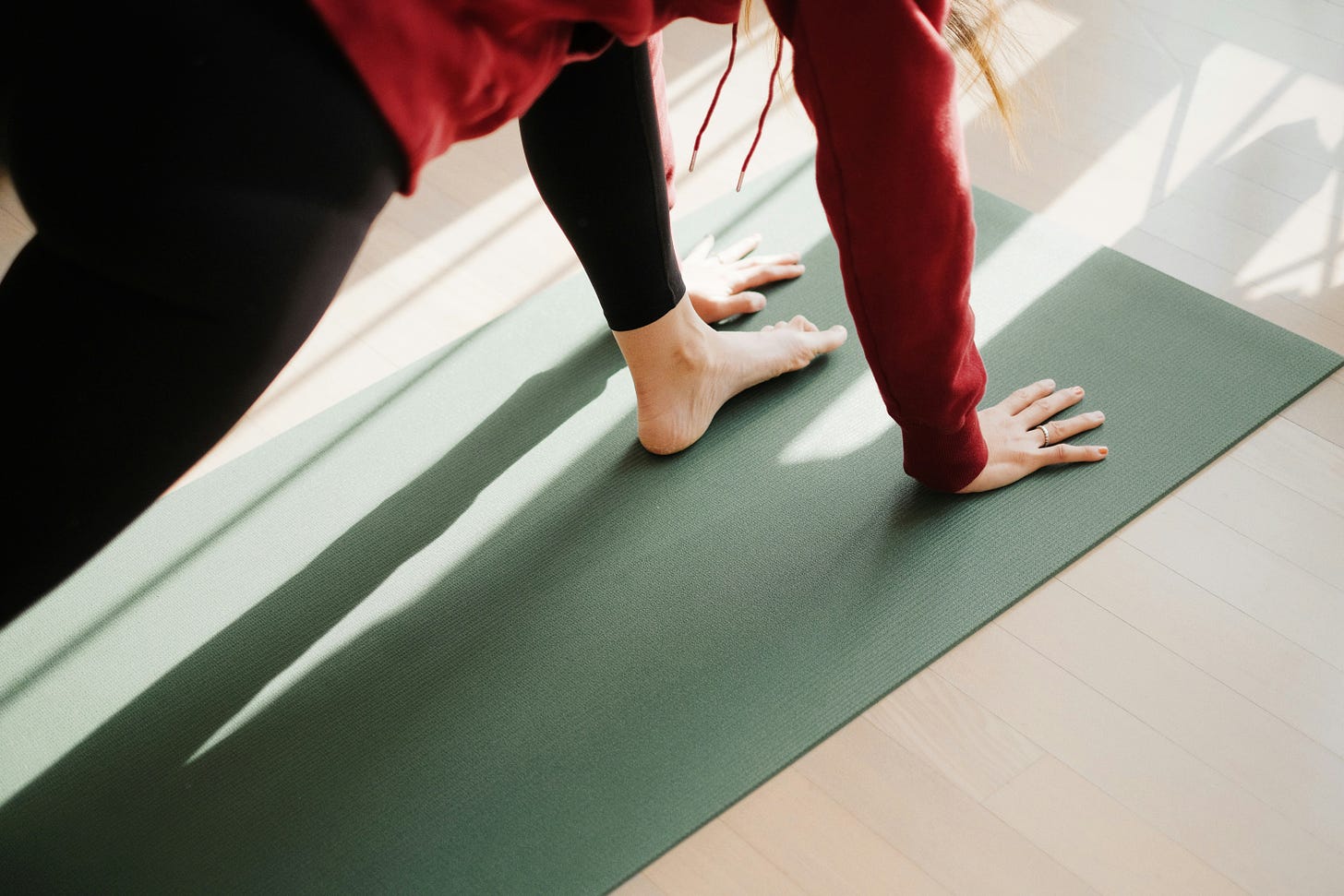
Just Listening
I walk into Wendy’s Saturday morning class in Boulder and scan the room for a place to lay my mat. One empty spot in the far corner near the shadows. Good—there I’ll be able to turn to the wall when I need to, when the tears come.
I am brand-new in town, and I am grieving. Just days ago, in the minutes before we set off on our cross-country drive here, I got word that my older brother’s colon cancer had returned. The moment I heard the news my belly gave a terrible lurch, and I knew then how this will end. My brother is only fifty-five. He is a smoker, has lived hard, and for much of his life he ate nothing but junk. When I’m not tearful, I am furious. How could he be so heedless of his health? Of us, who love him? Of his children, who depend on him?
Class begins. Wendy invites us to lie down on the floor.
“Offering your weight generously to the Earth, the Earth generously supporting your weight.” Wendy’s voice is still and steady, a lilt of cheer rippling just below the calm. “There is a fine intimacy between your body and the Earth.”
Intimacy. Now there’s a word you rarely hear in a yoga class. Funny too, when yoga is all about bringing body and mind into connection. Yoga, cognate of yolk.
I catch myself thinking and return to the room.
“Be very deliberate in how your body meets the Earth.” Wendy’s voice too is deliberate. “Be aware of each point of contact.” I check my vertebrae, feel them touching the floor. “The Earth hosting the weight of your body.”
My breath opens and deepens. Around me the pre-class bustle has quieted.
“Let the Earth breathe you, soften you,” she goes on. “The Earth is a source of calm.”
Barely five minutes into class, and already my muscles are easing, my mind carried by a flow of words fresh as springwater.
Wendy invites us to move to all fours, and we kneel side by side on our mats, extending one leg and and the other arm, then the reverse. Her voice draws a connection between our movements and the Earth. The link is breath.
“Between the Earth and your body,” she says, “an exchange of breath, a flow of recognition. The breath and gravity are old friends.”
The breath? And gravity?
Something in me wakes up, softly astonished. Of course, how simple—body and Earth. And flowing between them, the breath. The Earth breathing out gravity, holding us in an embrace as certain, and as involuntary, as the movement of diaphragm and lungs.
“The Earth is reliable. Avail yourself of its support.”
A catch between my ribs, and the tears begin. I turn my face to the wall and reach for the tissue tucked under the corner of my mat.
My brother’s passing leaves me the last remaining member of my birth family. I am not prepared for how lonely it is. I expected us to be old together, to talk about when he taught me to ride a bike or how chaotic it became in our parents’ home. He had just begun to make his peace with it all in the months before he died. Now my only other witness to those scenes is gone, and in some way I can’t explain, those years recede with him. I did not expect, when cancer took my brother, to lose my childhood as well.
And I can’t get past his smoking. Fifteen years of it. And the junk food, the drinking. I know from the research that they all increase the risk. No one on either side of our family has ever had colon cancer. There’s just no other way to explain it.
Turning these thoughts over and over, trying to come to terms, I keep making my way to Wendy’s class.
She guides us into triangle pose, our feet wide apart and firm on the Earth, our bodies reaching to the side, one hand resting below, the other stretching to the sky.
She never speaks to us of how a pose should look. No words from her about straightening an arm or stretching to our edge. Instead, she eases us away from our edge so that breath can flow, so that we can receive what wants to happen.
“Listen into the shape,” she offers quietly. “Listening in the silence to how your body wants to release.”
My balance falters; I have stretched my legs a little too wide. I straighten and back off a little and reach into the pose again.
“The Earth speaks to you through your feet, portals of access,” she adds. “The wisdom is in the listening.”
As I heal from my brother’s death, I turn again to the book I am working on. It’s my first book, and I’m trying to figure out how to write it. I can see the spine of the book—a memoir about how I opened to deeper connections with trees and birds and creeks. But how do I flesh out each chapter, shed light on each story of connection? How do I explain the birch tree of my childhood appearing to me in a quiet vision to say goodbye? Or a bald eagle flying out of their way to come circle over my car, after I had called to them in spirit?
I can only feel my way forward slowly, listening for what wants to be said. When a poem or essay crosses my desk and captures my attention, eventually I get the hint that it wants to be included, that it will have something to say to the chapter I’m working on. I weave its contribution in. Slowly the chapters take shape.
When I listen, who am I listening to—my self? Other writers? The wisdom of Earth?
Over time I realize that Wendy too is listening for what wants to happen. She does not bring a prepared outline to class. At the start she might ask, “What would you like to work on today?”
From here and there around the room: “Shoulders.” “Hips.” “Upper back.”
“Upper back? Oh, that’s a good one. We can work on that.”
Then for the rest of class Wendy attends to what wants to unfold in the moment. She leads us gently from one pose to another, hands over feet, spine turning, lying down then sitting then standing, through the asanas that draw our attention to that particular part of the body. Today we arrive at cow-face pose—to me, an impossible tangle. We sit on the floor, cross-legged with knees stacked in front of us, one on top of the other, hips protesting.
“Listen to the sensations,” she says. “Sensations are the language of the body.”
Now the hands. We lift one bent elbow toward the sky, reach the other toward Earth, hands behind our backs and fingertips making their way toward center, toward the exact place in the upper back where we carry so much tension.
“There is room for discussion in the body,” Wendy says.
“My shoulders are sure talking to me!” retorts a voice at the far end. Many chuckles around the room. We all just want her to release us from this pose. Right away.
Instead, her voice draws us deeper until we have fully listened to what is taking place within. “There is room in the body for a conversation you can listen to,” she says. “Listening to the dialogue with your body.”
Finally she guides us out of the pose. We trust her timing. We have watched, over and over, how she moves us forward with a sureness that looks like conscious intention. It has taken me a long time to realize she is just listening.
Next she invites us to lie on the floor, a foam block below the sacrum, another supporting the upper back. She suggests we raise our legs skyward. This is not part of any pose we are familiar with.
“Wendy, what are we doing?” comes a voice near the door.
“Isn’t it obvious?” she responds. “I have no idea!”
In Wendy’s class I hear more talk of Earth than I have ever heard in a yoga studio. For her, yoga and nature are not separate. And why would they be? Most of the asanas are named for a natural being—a cow, a pigeon, a tree. The practice is all about learning how to be from the natural world.
The way she guides us in class supports so well the kind of writing I am doing that one day I approach her afterward, eager to get to know her. I want to share this passion for Earth. When she hears I’m working on a book, her eyes light up. We chat a few moments about breath and earth—so close together, even in the letters of the two words.
“Oh, I can’t wait to read your book!” she says when we part.
I can’t wait either. So many things I want to talk over with her then!
In class we are working on a twisty pose: revolving triangle. Though I’ve been practicing this one for years, I’ve never yet managed to keep my balance in it.
We make our way toward the pose, bending forward from the waist, breathing, one foot behind the other. Then, hands resting on blocks on the floor, a slow twist toward the forward leg, still breathing, one hand moving to the hip as we turn. Wendy invites us to open just a little further.
“Listen to the calling of the spine,” she says. “The body seeks ease and balance. Move in harmony with your body, not in argument.”
Ah, that’s it. I’ve been arguing with my body in this pose for a long time.
But then I find a tiny opening, a new avenue of breath. My shoulder rises. Within my heart a new feeling of ease. More room.
“Watch how the breath moves your body,” she says. “The breath is enormously generous, as generous as the body allows.”
My hand reaches toward the ceiling. I am in revolving triangle, still breathing.
And I arrived here through invitation, not effort. Through laying down arms against the body.
For Wendy, the body takes the lead. She is teaching us that intelligence arises from cells and tissues and bones. “Sometimes we practice a kind of fascism toward the body,” a close friend of hers says, “like it’s all about discipline and forcing. Wendy would say the body knows how to self-organize. And all we have to do, really, is recognize the truth of what’s going on inside.”
For five years I attend Wendy’s Saturday morning class, writing my way through opening chapters—several versions—then through a book proposal, through sending it out to dozens of agents, through all the rejection letters. I am still attending class when one spring day I meet an agent in town, and she reads my pages and says yes. And I am still attending one year later on that ecstatic day when my agent secures a book contract.
Now all I have to do is finish the book. My contract gives me six months to write the last six chapters. My class attendance wanes. Now it is the writing that carries me forward. It demands all of me, uses every skill acquired over decades of being an editor, draws together threads of life that I didn’t even know were asking to be included. It is the most satisfying work I have ever done.
And it is exhausting. By the sixth month I can’t wait to slow down again, get back to Wendy’s studio on Saturday mornings. Finally I’ll have a chance to sit down with her, get to know her as a friend. I’ve been waiting so long for this! And I’m still mystified: How can she find that flow of words so effortlessly in class while at home I need hours of concentration to find my own version of it on paper?
In the fall I turn the manuscript in, elated. But before I get a chance to return to class I hear that Wendy is leaving teaching for a while. She needs to focus on healing. She has just been diagnosed with cancer. A mass on her liver, late Stage 4.
Her students are stunned. When we last saw her, she was the picture of radiant health.
Wendy starts chemo, then other healing protocols as well. Nothing helps. Over the winter her cancer progresses.
The following spring, in between correcting page proofs for my book, I am scheduled to fly to an international conference. In the weeks leading up to the trip I learn that Wendy is not doing well. As I am packing my bags I hear that she is preparing to die.
The day before I leave, I spend time in meditation to support her in her journey. Though I live across town from her, I feel as if I am in the same room with her. It is like attending the hours of labor before a birth—waiting, watching, breathing. In the waiting, time shifts—away from minutes and hours and toward simple presence. This is threshold time, the air charged with beginning and ending.
I can feel Wendy drawing away from us.
Flying out of the country, I miss my international connection and am stranded for twenty-four hours in an airport hotel in Houston. With nothing to do the following day but wait for an evening flight, I take out my yoga mat and practice. For a break, I head outside and hike around the hotel. And there, in the parking lot, is a van. A brown van with smiley-faces and flower decals and big white letters announcing “Bootsie the Clown.” In the side window, painted by hand: “Laughter, Yoga, Ho Ho Ha Ha Ha.”
Wendy would love it. I swear I can hear her laughing.
Checking email again, I learn that Wendy passed away only a few hours ago.
A couple of weeks later friends hold a small grief gathering at Wendy’s studio in Boulder. Faces around the room are ashen, ragged. What do we do with such a loss? It is far bigger than any of us can say.
The woman leading the ritual invites us to stand up and place ourselves in a continuum according to how close each of us felt to Wendy. We cluster like piglets near the head of the line. Whether or not we knew her outside of class, all of us felt close to her. Several say, “Whenever I talked with her, she made me feel like there was no one else but me.” Up and down the line heads nod, including mine.
At the end of the ritual I have one last question. “What kind of cancer did Wendy have?” I am expecting to hear “liver” or “pancreatic,” the kinds that take people fast before they have a chance to respond.
“Colon cancer,” the woman says. “Metastasized before there were symptoms.”
For a moment the room wavers and disappears. I blink hard to get it back. The same cancer my brother had five years ago when I arrived at Wendy’s studio, the cancer he died from at the very age I am now. How can this be—colon cancer in Wendy, a woman whose life was defined by listening, who paid such exquisite attention to the whispers of her own body? In my brother it made sense, but in Wendy?
And then I hear myself, the terrible judgment in my thought. I have been wielding a sword against my brother, blaming him for being sick, feeling furious at him for dying, as if he could have staved it all off all by making different choices. As if cancer cannot visit those who take good care of themselves.
My weapon is painted cardboard, brittle and useless. And Wendy has just shredded it. Even in death, she is teaching me. It is time to lay down arms against my brother.
On the eve of my book release a few weeks later I attend happy hour with some professional friends—writers, entrepreneurs. These women are wizards at what they do. They are gearing up on my behalf.
“So here’s how it works,” says a marketer. She lays it out: target readers, churn out words, get results.
To me it sounds like an assembly line, engine roaring at full speed. “But I don’t write that way,” I stammer, aghast.
“Then get someone to do it for you,” she shoots back.
Made-to-order writing? This book was made instead by listening.
How can I explain that the algorithms of the body start with emptiness? That words cannot heal unless they arise from the heart? That writing, to be generous, begins in letting go and listening?
At the end of class Wendy brings us to śavāsana, the pose of rest. The pose of the corpse. After all that letting go we practiced while standing or sitting or twisting, here is our chance to lie down and let go for real.
“Connecting to the Earth, the source of our vitality.” Wendy’s voice flows through the quiet. “Let the Earth move into the body, the body expand into the Earth, so that each can replenish the other.
“Šavāsana is a reunion with the Earth.”
Around the room, a deep calm. The busy minds we dragged into class are quiet, slowed to the pace of the body, the pace of Earth.
“Feel the nourishment of the ground.”
Beneath us, a sure embrace. Within us, not solidity but something livelier: spaciousness. More room for the breath, for receiving the Earth, for letting-be. Our asana the act of opening, over and over. As if the surest foundation for life is none at all, just listening. Simply listening.
The silence lingers, deep and sweet. When her voice comes again, it is barely audible.
“And when you’re ready, come to sitting again.” The sound slides gently between our breaths. Slowly we stir.
“Let’s breathe together a few moments.”
Soon we will walk out of the studio; soon we may feel tangled again in the knots of living. But in these moments, palms together, we breathe. Grateful, serene.
“Namaste,” she whispers.
In honor of Wendy Bramlett, 1960–2012.











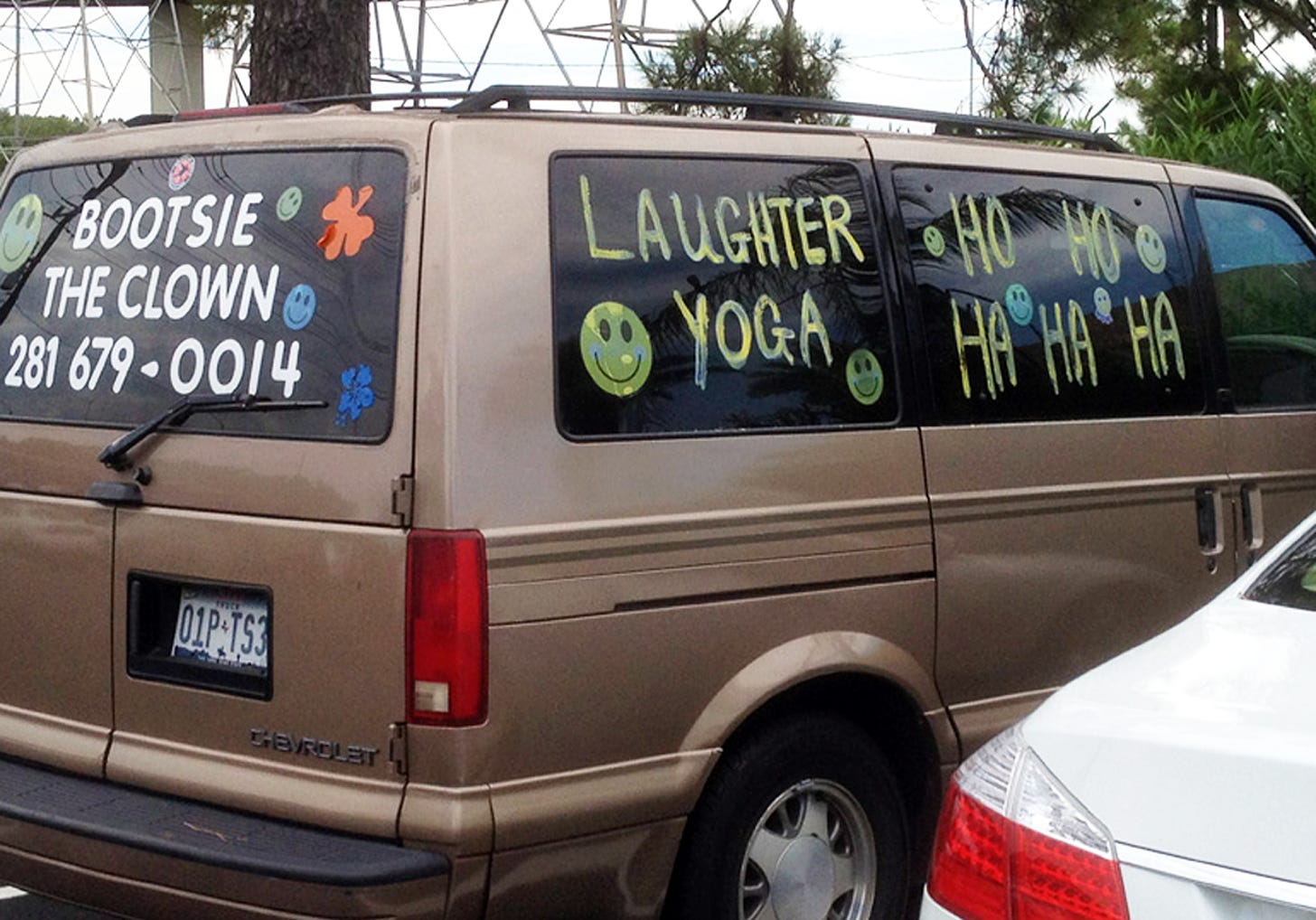





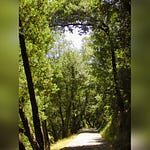
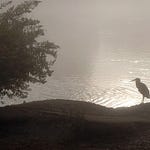
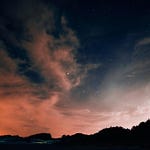
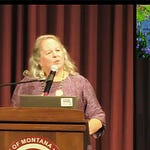


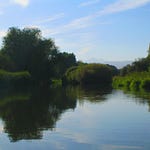
49. Just Listening